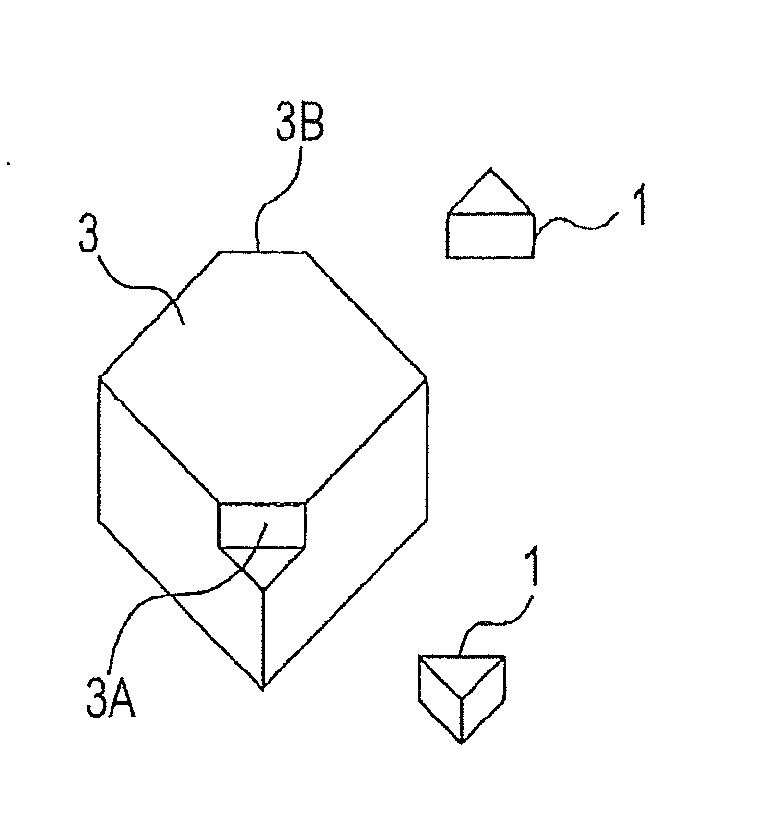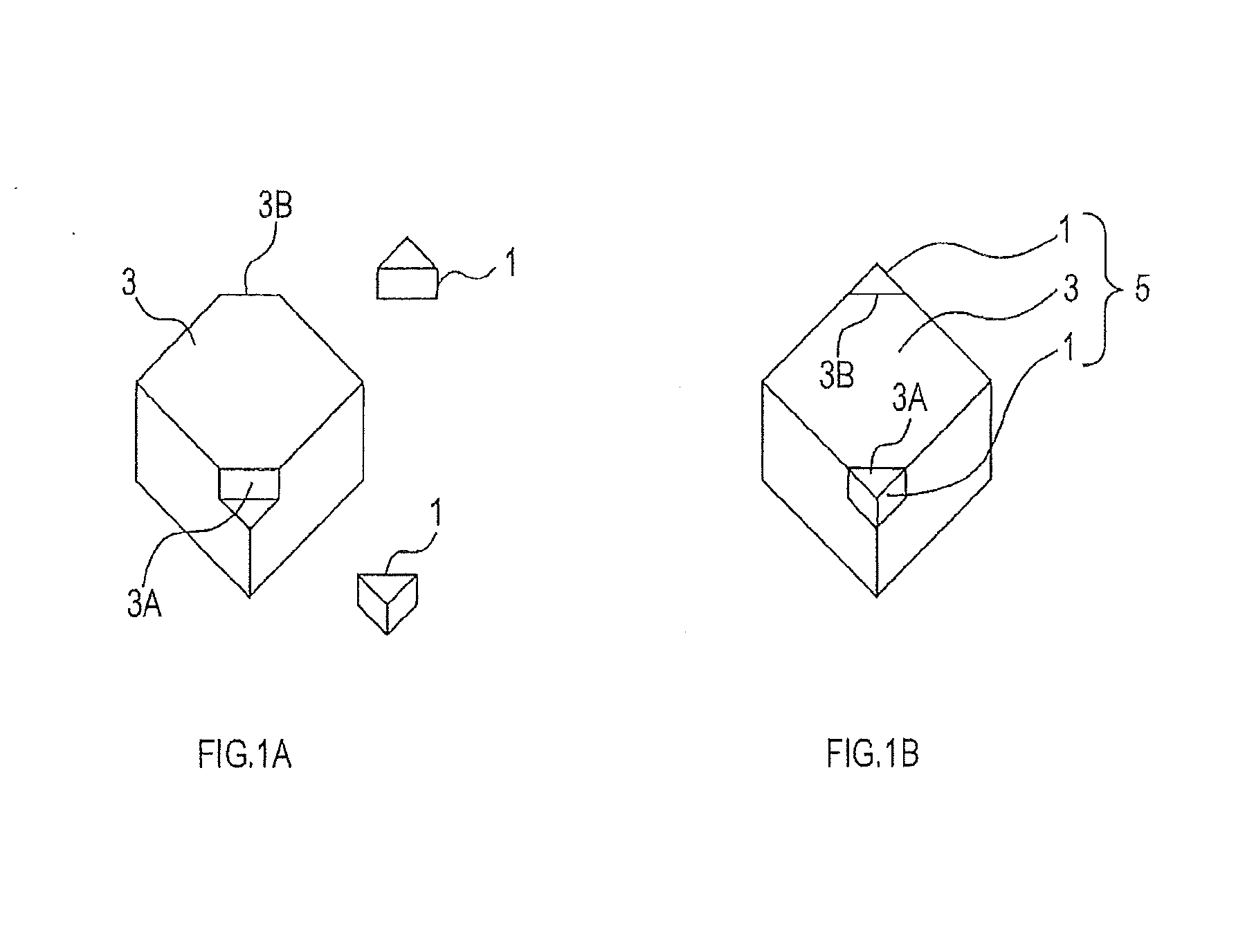Ceramic sintered body
a technology of ceramic and sinter body, which is applied in the field of ceramic sinter body, can solve the problems of difficult machine and high price of sic sinter body, and achieve the effects of excellent cutting performance, excellent breakage resistance and wear resistance, and high cutting efficiency
- Summary
- Abstract
- Description
- Claims
- Application Information
AI Technical Summary
Benefits of technology
Problems solved by technology
Method used
Image
Examples
example 1
1. Manufacturing Method of Ceramic Sintered Body
[0040]The following three types of material powders were weighed each in a predetermined amount, inserted together with acetone into a mill made of resin, and ground using alumina balls for 48 hours, to thereby obtain a slurry.
[0041]Alumina powders with an average particle diameter of 0.4 μm
[0042]Tungsten carbide powders with an average particle diameter of 0.1 to 1.5 μm
[0043]Zirconia powders with an average particle diameter of 0.6 μm (including 0 to 8 mol % yttria as a stabilizer)
[0044]The obtained slurry was warmed in hot water to remove ethanol and sieved to obtain mixed powders. The mixed powders were inserted into a carbon mold and hot-press sintered to obtain a ceramic sintered body. The conditions for the hot-press sintering were as follows:
[0045]Sintering temperature: 1650° C.
[0046]Sintering time: 2 hours
[0047]Pressure: 30 MPa
[0048]Atmosphere: Ar gas
[0049]In the above-described manufacturing method, the compounding ratio of th...
example 2
1. Manufacturing Method of Joined Body 5
[0085]First, as shown in FIG. 1A, a first member 1 made of the ceramic sintered body S5 of the above-described Example 1 and a second member 3 made of super hard alloy (made of WC and a cobalt binder) were manufactured individually. The first member 1 had a triangular prismatic shape. The second member 3 basically had a rectangular parallelepiped shape having cutouts in proportion to the first member 1 at its two vertices 3A and 3B.
[0086]Next, as shown in FIG. 1B, the first member 1 was joined to each of the vertices 3A and 3B of the second member 3 by brazing to thereby complete a joined body 5. The joined body 5 had a rectangular parallelepiped shape that corresponds to DNGA 150408.
2. Evaluation of Joined Body 5 (Part 1)
[0087](1) Test Conditions
[0088]Finishing was performed under the following conditions using the joined body 5 as a tip, when the portion of the joined body 5 that mainly contacted the cutting workpiece was the first member 1....
PUM
| Property | Measurement | Unit |
|---|---|---|
| average particle diameter | aaaaa | aaaaa |
| particle diameter | aaaaa | aaaaa |
| particle diameter | aaaaa | aaaaa |
Abstract
Description
Claims
Application Information
 Login to View More
Login to View More - R&D
- Intellectual Property
- Life Sciences
- Materials
- Tech Scout
- Unparalleled Data Quality
- Higher Quality Content
- 60% Fewer Hallucinations
Browse by: Latest US Patents, China's latest patents, Technical Efficacy Thesaurus, Application Domain, Technology Topic, Popular Technical Reports.
© 2025 PatSnap. All rights reserved.Legal|Privacy policy|Modern Slavery Act Transparency Statement|Sitemap|About US| Contact US: help@patsnap.com



